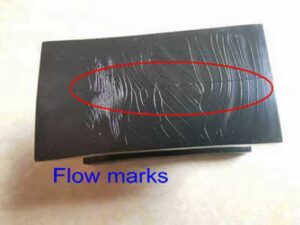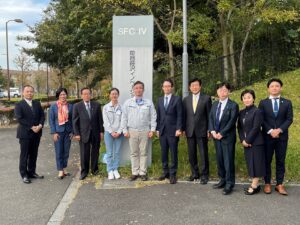AI Visual Inspection Trends and Future Perspectives
Perspectives on the Future of AI Visual Inspection
AI visual inspection represents a revolutionary advance in quality assurance in the manufacturing sector. By combining computer vision and machine learning, this technology has the ability to detect minute defects that are often missed by traditional methods. Furthermore, AI can continuously learn and improve, and its accuracy improves over time.
Current Status and Future Prospects for Technological Innovation
The Changing Role of AI in Manufacturing
AI's role is expanding from automating simple tasks to complex decision-making processes. In the early stages, AI was responsible for monotonous sorting tasks and basic quality inspections on the manufacturing line. Today, however, AI is being incorporated from the product design stage, leveraging data accumulated throughout the actual manufacturing process to help improve production efficiency and reduce costs. In the future, AI will play a more strategic role in production forecasting, resource allocation, and even supply chain management.
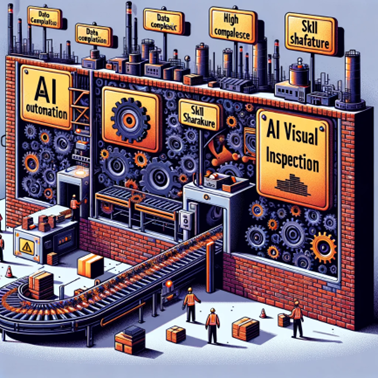
Barriers to Automation.
Automation has the potential to revolutionize many industries, but progress in automation in visual inspection faces several barriers. In AI visual inspection systems in particular, technological constraints and industry-specific resistance have prevented automation from becoming a reality.
Reality of Technical Constraints
Technical constraints can be a major barrier to the deployment of AI visual inspection systems. One of these is the limited ability to process high-resolution images. The detailed image analysis required by inspections is computationally resource-intensive, and current hardware may not be able to keep up with the processing speed. In addition, AI models require large amounts of data and sophisticated algorithms to accurately identify complex patterns and subtle color changes, which are costly to both develop and maintain.
Industry Resistance and Challenges
Another barrier is industry resistance. Many manufacturers have invested heavily in their existing processes and equipment and are often reluctant to migrate to a new system because it is seen as an additional investment. Additionally, the existing workforce may lack the skills to properly operate and manage AI technology. This may require education and retraining, which will require additional cost and time. They may also face resistance from employees and labor unions due to fears that automation will eliminate jobs.
These barriers are important considerations in moving forward with the adoption of AI visual inspection technology. Along with technological advancements, changing industry attitudes, providing up-skill training, and demonstrating the value of new technologies are key to facilitating the widespread adoption of automation.
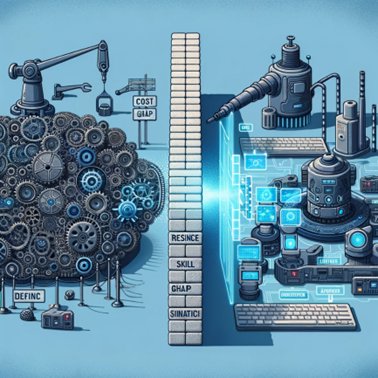
AI Technology Advances in Appearance Inspection
Advances in AI technology are fundamentally changing the visual inspection process in manufacturing. Image recognition technology and the application of deep learning, in particular, are at the heart of this transformation.
Advances in Image Recognition Technology
Image recognition technology is an essential element in detecting defects on product surfaces. This technology analyzes images of products taken from multiple light sources and angles and evaluates their patterns, textures, and tints to determine whether they are free of defects. Recent advances in high-resolution cameras and high-speed processors have made it possible to identify minute defects and even very minor color changes that were previously difficult to detect. This has dramatically improved the accuracy of quality assurance.
Applications of Deep Learning
Deep learning is a form of AI that is extremely capable of understanding complex data patterns. In the context of visual inspection, deep learning models learn from thousands to millions of images to identify features unique to each product. This allows them to detect subtle differences and sometimes even invisible defects in a product. For example, in the automotive industry, deep learning is used to detect subtle irregularities and slight unevenness in the paint. And in the food industry, it is being applied to consistently assess the quality of products with inconsistent shapes and sizes.
These innovations are contributing significantly to reducing defects, improving production efficiency, and reducing costs on the manufacturing line, and the evolution of visual inspection through AI technology will continue to be an important pillar of competitiveness in the manufacturing industry.
AI learning process for determining good products.
AI's ability to automatically distinguish between good and defective products is extremely valuable to the manufacturing industry in assuring product quality. This process requires complex learning algorithms and large amounts of data to accurately identify good products.
Basics of Learning Algorithms
AI learning algorithms analyze large amounts of data to recognize patterns and apply that knowledge to new data. The AI learning process in good determination first trains a model using a large amount of labeled data (samples of good and bad products). During this process, the AI learns that certain features (color, shape, size, etc.) are important for classifying good and bad products. Supervised learning is the most common method, where the AI "learns" based on the correct answers in a given data set.
Identifying Good and Defective Products
Once trained, an AI model can inspect an unknown product and determine whether it is good or defective. This process is done by analyzing images of the product and matching them with learned features; AI is capable of detecting defective products that the human eye would otherwise miss, such as minor scratches, uneven paint, and minute shape changes. In addition, AI models can collect more data over time and increase their accuracy through self-learning, which is expected to lead to continuous improvement.
Thus, the process of learning to identify good products by AI is an important factor in maintaining product quality and promoting efficiency in the manufacturing process.
The relationship between data and AI visual inspection
Data is the lifeblood of an AI visual inspection system, and the phrase "Garbage in, Garbage out" (poor input data produces poor results) represents one truth in the world of data analysis. The higher the quality of the data, the more accurate the decisions AI can make.
Importance of Data Quality
The quality of the data used to train an AI model is directly related to the accuracy of the subsequent visual inspection. A high-quality data set means data that is accurate, complete, relevant, accessible, and reliable. If the data is noisy, i.e., contains incorrect or irrelevant information, the AI may learn incorrect patterns and consequently misidentify defective products as good. This can cause serious problems in the manufacturing industry. Therefore, data cleansing and preprocessing are essential when training AI models.
Utilizing Big Data
The advent of Big Data has enabled AI to learn from more information and perform more accurate visual inspections. By extracting patterns from vast amounts of image data and setting inspection criteria based on these patterns, AI increases the ability to identify subtle differences in products. However, the use of big data further emphasizes the importance of data quality. It is not just a matter of quantity, but how much high-quality data is used for analysis that will determine the success of AI visual inspection.
Ultimately, high-quality data is essential for an AI visual inspection system to produce reliable results. Accurate data collection and processing is the key to improving efficiency and quality in manufacturing.
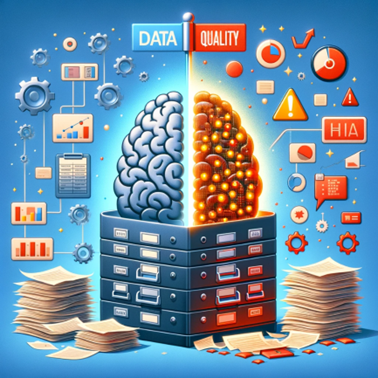
AI Visual Inspection Application Areas and Success Stories
AI visual inspection has proven its value in diverse industries, making a significant contribution to streamlining quality assurance processes.
Industry Application Examples
-
Automotive Industry: Advanced image recognition AI is used to detect minute scratches and non-uniformities on painted surfaces of automotive parts. In particular, AI-based visual inspections of body panels and safety-critical components have dramatically reduced the number of defective parts shipped.
-
Electronic Component Manufacturing: In printed circuit board (PCB) manufacturing, AI detects soldering defects, chips, shorts, etc. AI's ability to recognize fine patterns is critical to product reliability.
-
Food Industry: AI analyzes the shape, color, and size of food products to eliminate those that do not meet quality standards. This helps provide consumers with safe and healthy food products.
-
Pharmaceuticals: AI is used to inspect the quality of tablets and capsules to detect abnormalities in shape and color, thereby ensuring safe products.
Analysis of Success Factors
Analysis of success stories shows that the following factors are important.
-
Use of high-quality data: Successful cases have in common the high quality and diversity of the data used for training and testing.
-
Selecting the right model: The AI model most suited to the problem is selected and customized. This includes convolutional neural networks (CNN) and recurrent neural networks (RNN).
-
Continuous Optimization: AI systems are not set up once and are subject to continuous feedback and improvement.
-
Expertise: Getting the most out of AI requires expert oversight and coordination. In particular, they must be able to interpret and adjust the AI's behavior.
These elements can be organized into a table as follows.
| Industry | Applications | Success Factors |
|---|---|---|
| Automotive | Paint Surface Scratch Detection | High Quality Data, Continuous Optimization |
| Electronic Components | PCB Defect Detection | Model Selection, Expertise |
| Food Products | Quality Sorting | Data Diversity, AI Interpretation Capabilities |
| Pharmaceuticals | Detection of shape and color anomalies | Continuous improvement, high-quality data |
As these successful examples show, the application of AI visual inspection depends on accurate data input, expert knowledge and experience, and continuous model optimization. When these factors are in place, AI visual inspection can greatly improve quality assurance reliability regardless of industry.
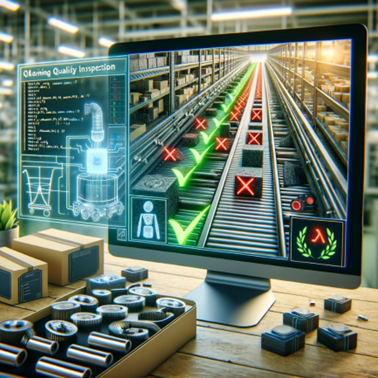
Goodness learning algorithm understandable for beginners.
Good Product Learning Algorithms in AI Visual Inspection form the basis for AI to evaluate and distinguish product quality. This section explains how AI learns which products are good and which are bad in a way that even a novice can understand.
Basic Principles of the Algorithm
The basic principles of the good product learning algorithm are relatively simple. First, the algorithm learns by "seeing" a large number of product images (both good and bad). Each image is labeled as good or bad, and the algorithm learns product features from these labels. For example, it identifies features, patterns, and tints common to images of good products and distinguishes them from those of bad products. This process is called "supervised learning," in which AI learns from the correct answers in the data.
Explanation of the latest trends
The latest trend is "human-AI collaborative learning," in which AI seeks feedback from human inspectors when it is unsure of its own judgment. This allows AI to improve its ability to make decisions for highly uncertain cases.
Deep learning, especially convolutional neural networks (CNNs), are also particularly powerful in image recognition; CNNs can learn complex hierarchical structures in images and capture a wide range of features, from detailed features to overall patterns.
In addition, a technique called transfer learning allows an AI model learned for one task to be applied to another task. This is especially useful when data is scarce, speeding up the learning process and helping to quickly apply AI to new product lines.
These advances enhance the ability of AI visual inspection to maintain and improve quality at all stages of the production line.
Expectations and Opportunities in AI Visual Inspection
AI visual inspection is opening new horizons for quality control in manufacturing, bringing technological advances and a profound impact on the industry.
Potential for Technological Advancement
With the rapid development of AI technology, visual inspection is becoming increasingly sophisticated. Future technological advancements are expected to include the following possibilities:
-
Advanced sensor technology: The development of more precise sensors will enable the detection of minute defects and flaws that are difficult to detect with conventional technology.
-
Improved real-time processing: Powerful processors and algorithmic advancements will enable instant analysis on the production line, further increasing production efficiency.
-
Improved self-learning capabilities: AI models will evolve themselves through continuous learning, enabling more accurate inspections over time.
-
Development of adaptive systems: flexible AI systems are expected to be able to automatically adjust as product lines change.
Industry Impact
Advances in AI visual inspection technology are expected to have the following industry impacts:
-
Redefining Quality Assurance Standards: AI inspections will raise quality assurance standards and significantly reduce reject rates.
-
Cost reduction: Streamlined inspection processes will save time and money, helping to lower overall manufacturing costs.
-
Increased Customer Satisfaction: Consistent quality control increases customer confidence and enhances your competitive edge in the marketplace.
-
Optimize the supply chain: Detailed analysis of inspection data by AI helps optimize the entire supply chain.
These advances in AI visual inspection technology have the potential to cause a paradigm shift in manufacturing and are expected to bring tremendous value to the industry.
Future Prediction: AI Visual Inspection in 5 Years.
The future of AI visual inspection will undergo significant change as technological advancements and industry needs converge.
Exploring the Long-Term Vision
The long-term vision for AI visual inspection in 5 years could include the following developments.
-
Fully Automated: AI visual inspection will likely become a fully automated process requiring little or no human supervision. This will increase inspection speed and enable 24/7 operations.
-
Integrated systems: AI will be integrated at every stage of production, with real-time quality monitoring. This will improve efficiency and quality throughout the manufacturing process.
-
Enabling Predictive Maintenance: AI will be able to monitor the condition of machines and equipment through visual inspection and predict future failures.
Technology Maturity and Diffusion
The following changes are expected in the maturation and diffusion of AI visual inspection technology in the next 5 years.
-
Decrease in cost: The cost of high-performance AI inspection systems will decrease, leading to greater adoption by smaller companies.
-
Standardization: International norms and standards for AI visual inspection will be set, making quality control more transparent.
-
Democratization of AI technology: AI inspection technology will become more accessible and widespread to smaller manufacturers.
-
Expanding into new materials and products: Advances in AI visual inspection technology will enable quality control of new materials and complex products, spurring innovation.
Five years from now, AI visual inspection will be a foundational technology shaping the future of quality assurance and manufacturing. As the technology evolves, product quality will improve and production efficiency will increase dramatically.
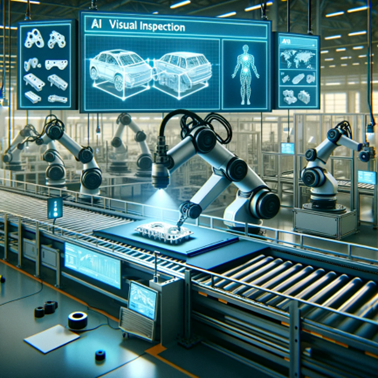
TOMOMOMI RESEARCH's Differentiated Strength.
TOMOMI RESEARCH serves the industry with its proprietary AI visual inspection system. In particular, our advanced technologies, FORESIGHT STEREO and E3 ENGINE, overcome the challenges of traditional visual inspection and take quality assurance to a level beyond human capabilities.
Unique Technologies and Solutions
FORESIGHT STEREO provides a solution for detecting shallow scratches and stains found on shiny products, capturing defects that are often overlooked by the human eye; E3 ENGINE is a technology that learns from good products to improve the accuracy of anomaly detection, particularly effective in the Japanese manufacturing industry where defects are rare. E3 ENGINE is particularly effective in the Japanese manufacturing industry, which has few defective products.
Contribution to the Industry
These technologies reduce the time and labor required for visual inspections and enable highly accurate, real-time data collection. In addition, the TR-100 system with its user-friendly GUI provides highly accurate visual inspection that does not rely on human judgment, making it ideal for manufacturing sites that are considering implementing an AI visual inspection system for the first time.
With the integration of these core technologies, TOMOMI RESEARCH is redefining quality control standards within the manufacturing industry and ensuring that product inspection accuracy and reliability are improved.

